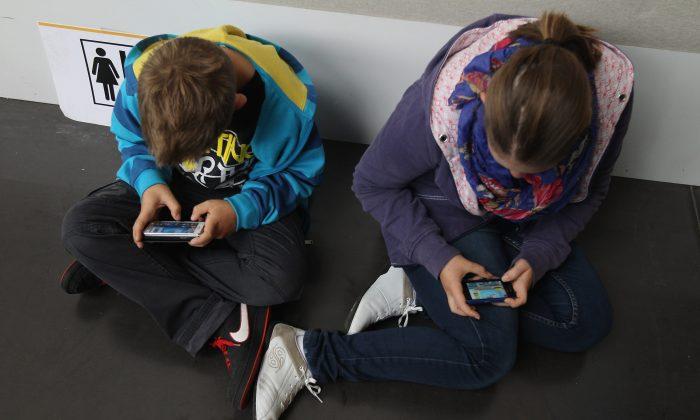New statistics show that the presence of small screens has increased in children’s lives, with one in four children spending more than 20 hours a week on screen-based devices.
Statistics found that the percentage of children aged between 5-14 years using screens remained around the same when compared with 2017-18 data at around 90 percent. However, the amount of time spent using screen-based devices has since increased dramatically, with nine in ten children spending at least one hour a week using screen-based devices.
“Of children doing screen-based activities, 40 percent were spending 10-19 hours, but there has been an increase in the percentage of children using screens for more than 20 hours a week, from 16 percent to 24 percent,” Michelle Ducat, ABS head of education statistics, said.
Reading has became less prevalent in older age groups, with only 63 percent of 12 to 14 year olds taking up reading, 76 percent of five to eight year olds.
“Reading for pleasure was considerably less popular than screen-based activities, with 72 percent of children reading—down from 79 percent in 2017-18. Around one third of these children read for two hours or less a week.”
Children who participated in creative activity also fell to 59 percent in 2021-2022 compared to 63 percent in 2017-18.
“Arts and crafts were the most popular creative activity among children, with 39 percent of children participating at least once a week,” Ducat said.
“This was followed by singing or playing musical instruments and creative writing, both with 19 percent of children involved in these activities.”
Although creative activities were popular among 60 percent of five to eight year olds, only 55 percent of older children aged 12 to 14 years were found to have participated in a creative activity.
National Guidelines for Screen Time
The Australian Institute of Family Studies published an article in August 2021 with an overview of the national guidelines for screen time. The studies show the effects of excessive screen time and how practitioners can support families to reduce screen time.The guidelines were developed from systematic reviews of the evidence about the effects of physical activity, sleep, and sedentary time (including screen time) on the development, health, and well-being of children.
It is recommended for children younger than two years to not have screen time; no more than one hour per day for children aged two to five years, and no more than two hours of recreational screen time per day for children and young people aged 5-17 years.
However, most Australian children spend more time using screen-based devices than the recommended amount.
Estimates from primary research suggest only 17–23 percent of pre-schoolers and 15 percent of 5-12 year olds meet the screen time guidelines.
Screen time was shown to have increased between the ages of 10 and 14 in the categories of gaming, watching TV, and computer use for boys and social networking for girls.
How Australian Children Are Using Their Phones
In 2020, the reported number of Australian children aged six to 13 who used phones increased to 46 percent compared to 41 percent in 2015, according to a report published by the Australian Communications and Media Authority.From June 2019 to June 2020, it is reported that 33 percent of children aged between 6 to 13 owned the phone they used, and 54 percent did not have access to or own a phone.
Children With Their Own Smartphones Are the ‘New Normal’
A 2017 poll by the Royal Children’s Hospital (RCH) Melbourne—RCH National Child Health Poll—shows that children who have their own smartphone or tablet are considered the “new normal” for Australian children.The poll found that one in six primary school-aged children were on social media, “which is concerning when the restriction on most accounts is for a minimum age of 13, and we also found that those kids on social media were more likely to experience online bullying,” Rhodes said.
Rhodes said that around half of Australian children are using screen-based devices up until bedtime, and a quarter of those children have sleep issues due to their screen use.
“The most concerning finding from the poll is that around 50 percent of pre-schoolers and toddlers are using screen-based devices on their own without supervision,” Rhodes said.
Rhodes added that 85 percent of parents said they used devices to keep their children occupied so they could get things done.
The poll also found that in households where parents spend a lot of time on screen-based devices, their children would follow.
“So it’s important to remember that where we can, even though it’s hard, parents should model healthy habits,” Rhodes said.





